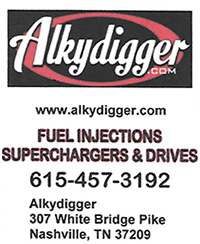Before each race (also known as a pass), each driver is allowed to perform a burnout, which heats the driving tires and lays rubber down at the beginning of the track, improving traction. Each driver then lines up (or stages) at the starting line. Races are started electronically by a system known as a Christmas tree. The Christmas tree consists of a column of lights for each driver/lane. In each column, the top two lights are small amber lights (or two halves of an open blue circle split with a bar in the center that lights when the second light has turned on; that form debuted April 15, 2011 at zMax Dragway and became permanent for NHRA National events) [1] connected to light beams on the track, which when broken by the vehicle’s front tire(s) indicate that the driver has pre-staged (approximately 7 inches (180 mm) from the starting line) and then staged (at the starting line).
Below the staging lights are three large amber lights, a green light, and a red light. When both drivers are staged, the tree is activated to start the race, which causes the three large amber lights to illuminate, followed by the green light. There are two standard light sequences: either the three amber lights flash simultaneously, followed 0.4 seconds later by the green light (a Pro tree), or the ambers light in sequence from top to bottom, 0.5 seconds apart, followed 0.5 seconds later by the green light (a Sportsman tree, or full tree). If the front tires leaves from a stage beam (stage and pre-stage lights both turned off) before the green light illuminates, the red light for that driver’s lane illuminates instead, indicating disqualification (unless a more serious violation occurs). Once a driver commits a red-light foul (also known as redlighting), the other driver can also commit a foul start by leaving the line too early but still win, having left later. Should both drivers leave after the green light illuminates, the one leaving first is said to have a holeshot advantage.
The winner is the first vehicle to cross the finish line (and therefore the driver with the lowest total reaction time and elapsed time). The elapsed time is a measure of performance only; it does not necessarily determine the winner. Because elapsed time does not include reaction time and each lane is timed individually, a car with a slower elapsed time can actually win if that driver’s holeshot advantage exceeds the elapsed time difference. This is known as a holeshot win.
Several measurements are taken for each race: reaction time, elapsed time, and speed. Reaction time is the period from the green light illuminating to the vehicle leaving the starting line. Elapsed time is the period from the vehicle leaving the starting line to crossing the finish line. Speed is measured through a speed trap covering the final 66 feet (20 m) to the finish line, indicating the approximate maximum speed of the vehicle during the run.
In the standard racing format, the losing car and driver are removed from the contest, while the winner goes on to race other winners, until only one is left.



